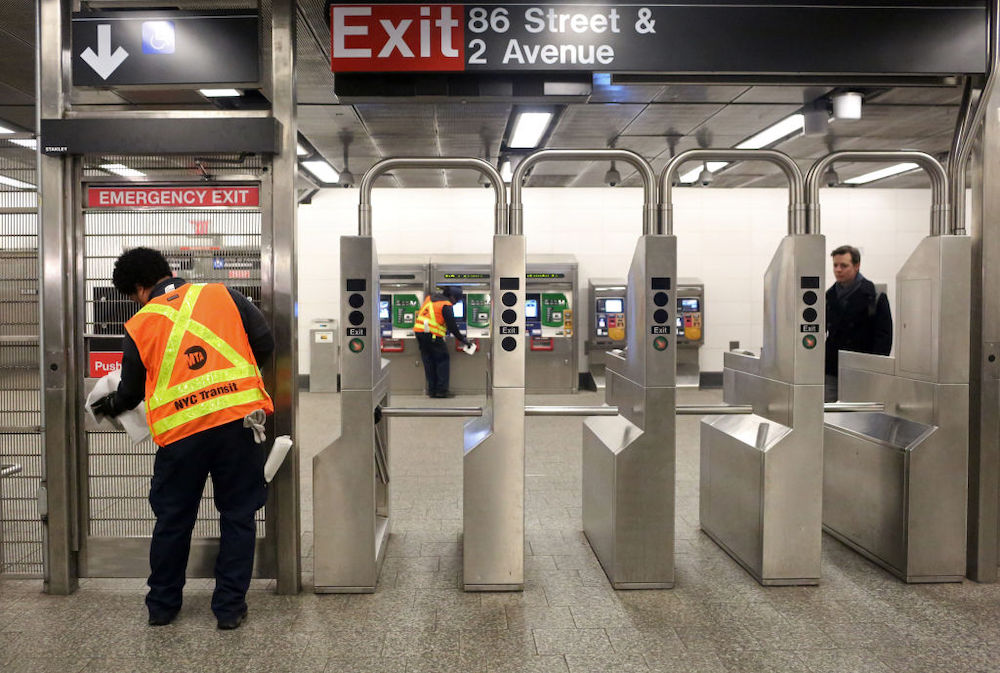- COVID-19 slashed passenger numbers and revenue at the biggest U.S. public transportation systems as riders stay home.
- Transit authorities have responded with reduced service and, in the case of San Francisco, ended all rail traffic.
- The $2 trillion coronavirus bill provides $25 billion to the nation’s transit-system operators, a sum that experts say is insufficient.
The COVID-19 outbreak that has transit systems across the U.S. hemorrhaging passengers is exposing weaknesses in the nation’s transit systems and may leave long-term damage as plummeting ridership strains budgets.
From New York’s MTA to the Bay Area’s BART, transit-system operators have responded to the ridership decline by slashing service. The loss in passenger revenue may result in further service cuts and higher fares, according to transit experts. Localities are projected to see lower overall tax income because of the pandemic at a time when medical, welfare and other government services are stretched thin, leaving less money for transportation.
“The immediate concern is getting our heads above water,” Joseph Kane, a senior research associate at the Brookings Institute, told Karma. “It’s shown the weaknesses of our infrastructure, especially transportation systems and aviation.”
The MTA, the nation’s largest transit operator, last week cut subway service because of an 87% drop in ridership from a year earlier. The agency also reduced bus and commuter-rail operations as people stayed home. BART announced the ridership was down 90%. Chicago, Washington and Boston are among the other systems that have also announced plunging ridership and service cuts.
“Transportation infrastructure should serve as a reliable foundation, getting people and goods where they need to go,” Kane said. “It’s under obvious strain.”
While most systems have settled for making cuts, San Francisco’s Muni Metro light rail has gone further — shutting down indefinitely starting today.
The $2 trillion CARES Act signed by President Donald Trump includes $25 billion for the country’s transit agencies. The MTA may get about $3.8 billion, just short of the $4 billion requested. The MTA is losing $125 million in fare revenue each week, and may soon need further help, CFO Bob Foran said. Foran said that the authority surely will see losses in the $6.4 billion it receives from dedicated state and local taxes.
“City budgets are a major concern,” Jemilah Magnusson, global communications director for the Institute for Transportation and Development Policy, told Karma. “The closure of restaurants and other businesses has cut their biggest sources of revenue.
“Cities are shouldering so many expenses as a result of this pandemic, and it’s uncertain whether the federal administration will provide sufficient aid,” he said. “They will have a hard time paying for the projects that are already in progress.”
A drop in frequency makes public transit less useful, which triggers a downward spiral in passenger numbers. Ridership declines will hurt the bigger transit agencies most, because they cover a greater percentage of their operating costs through fares, according to David Zipper, a visiting fellow at Harvard Kennedy School. Higher fares, of course, would also hurt the number of riders.
Long-term infrastructure programs also may come under threat, transit experts say. The MTA’s $54 billion plan to modernize the system’s antiquated infrastructure might have to be rethought, the New York Times reported.
While the majority of people are being urged to stay home, public transportation is still needed for critical workers such as doctors, nurses, first responders, pharmacists and grocery workers. When the pandemic eases, service will have to be restored or even increased if the economy is to grow again.
“I hate to call it a silver lining, but a disaster causes people to focus on issues,” Kane said.
Photo by Yana Paskova/Getty Images






















